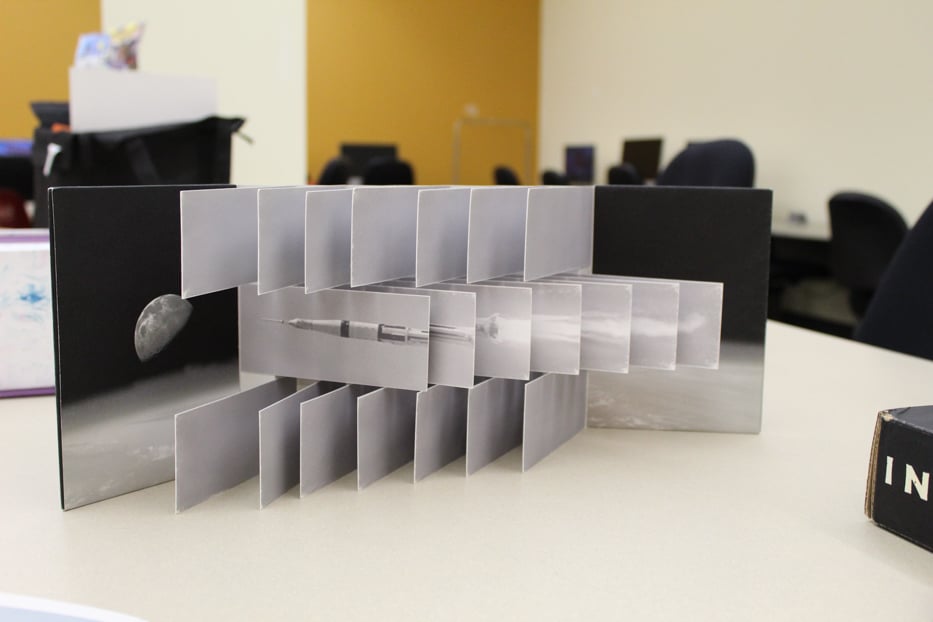 Destination Moon by Karen Hammer. Photos Kapp Singer.
Destination Moon by Karen Hammer. Photos Kapp Singer.
Books bound in tote bags and books with mirrors inside. Books with two spines and books with no pages. One volume must be held at just the right angle so that glossy black text stands out from matte black paper, and another has secret illustrations revealed only by the purple glow of an ultraviolet light.
Such is the wonder and whimsy of the Artists’ Books Collection at Southern Connecticut State University’s Buley Library, stewarded by SCSU Arts and Special Collections librarian Tina Re.
Re said she first fell in love with artists’ books after encountering a collection at Yale University’s Sterling Memorial Library in the early 1980s. She had previously attended art school but had never been introduced to artists’ books, and found herself fascinated by the medium.
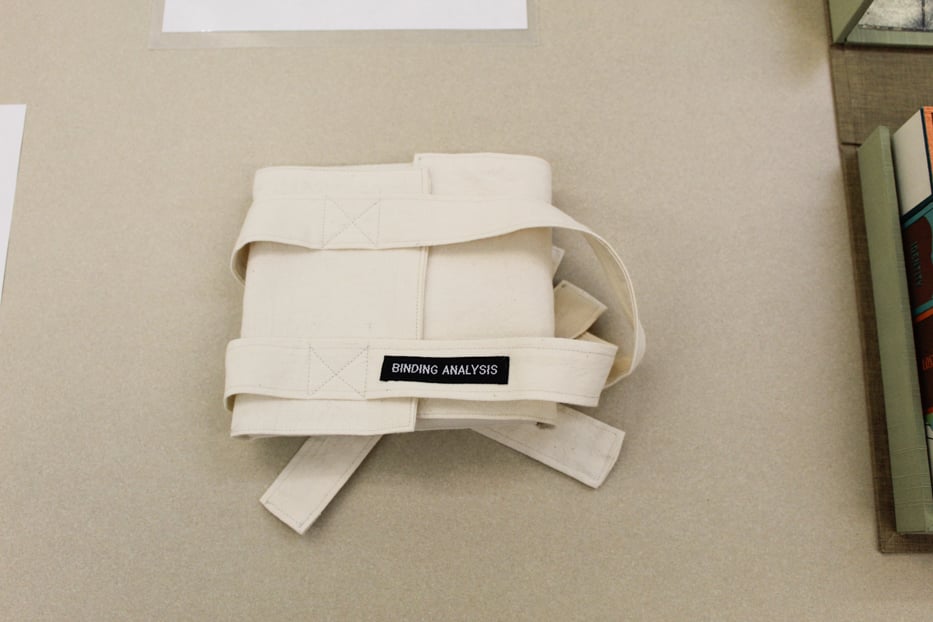
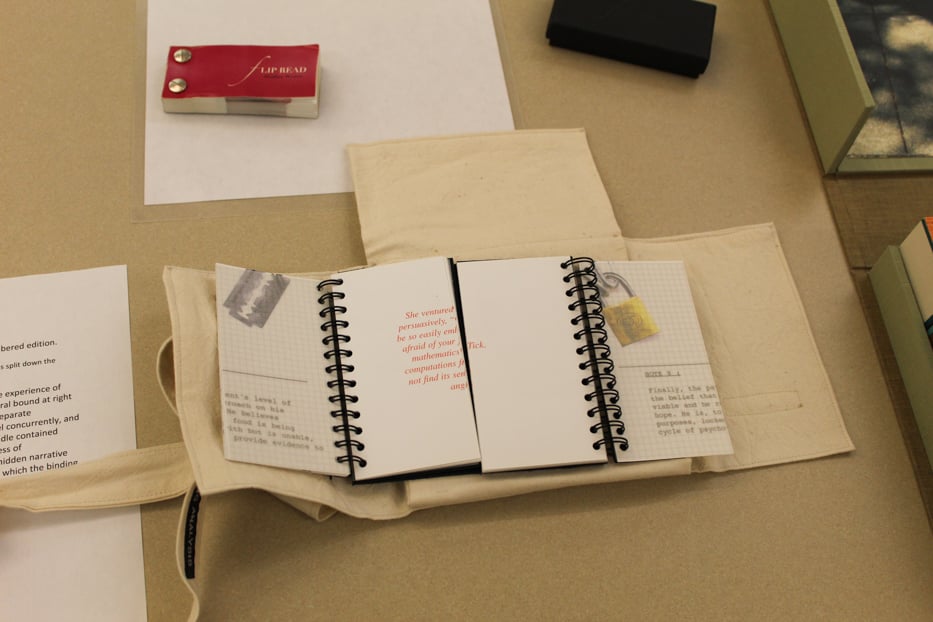 Binding Analysis: Double Bind by Heather Weston.
Binding Analysis: Double Bind by Heather Weston.
“I was just looking at these weird things and trying to figure them out—that stuck with me,” she said. “It was always in the back of my mind that I wanted to bring artists' books and the arts to libraries.”
Over nearly two decades, Re has amassed more than 200 objects that push bibliographic boundaries. One volume—a slim pamphlet by Julie Chen and Clifton Meador—captures the collection’s ethos especially well: on the very first page, it asks “What is a book?”
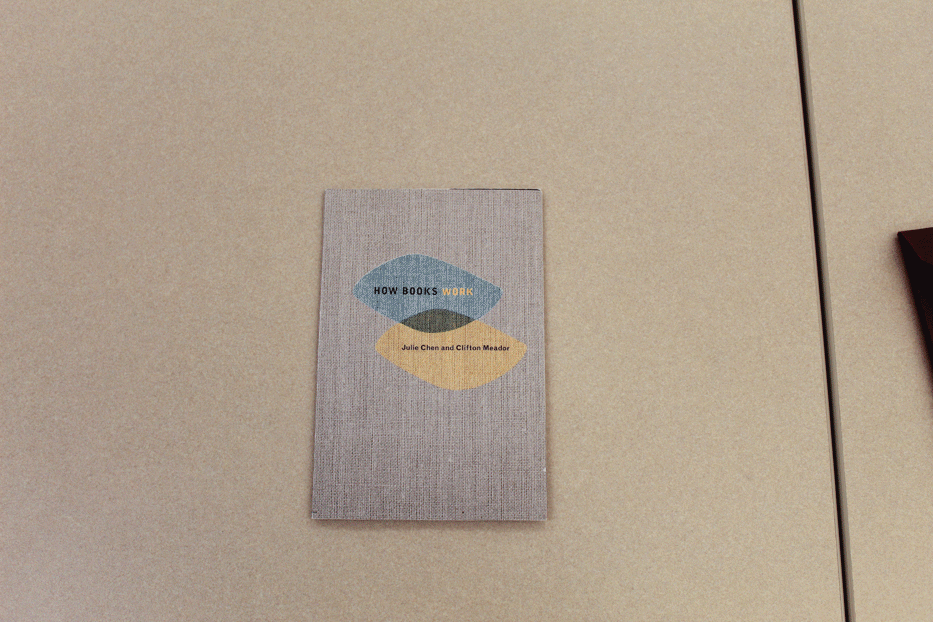 Julie Chen and Clifton Meador's How Books Work grows as it unfolds.
Julie Chen and Clifton Meador's How Books Work grows as it unfolds.
In the early 1990s, Re began working at SCSU after earning her library science degree, and began building the collection in 2005. She stretched a $1,000 annual budget as far as she could, acquiring three or four books per year from rare book dealers and directly from artists.
Today, Re explained, the market for artists’ books has inflated significantly as the medium has become increasingly popular. She lamented the fact that these books are often held in museums and sealed behind glass.
“To put them in a gallery or an exhibition case makes no sense to me,” Re said. “The material is also part of reading. It's part of the content, it’s part of the message.”
With the collection at SCSU, she wants to put artists’ books into the hands of the public.
“I just believe that these books belong in libraries,” Re said. “They’re works of art—there’s no doubt about it—but they're books. And we experience them in the context of the history of the book, we experience them in the context of an intimate reading experience.”
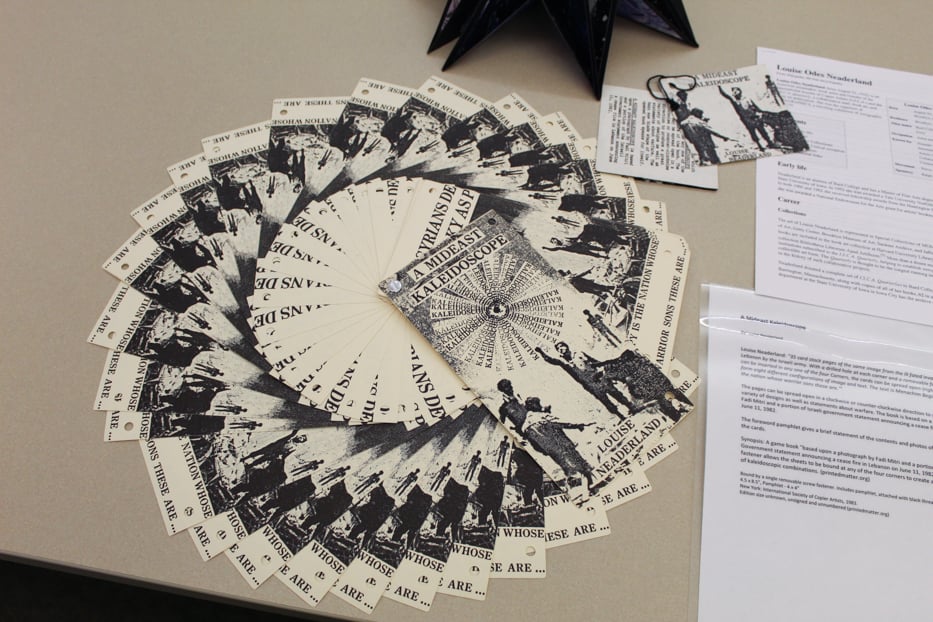
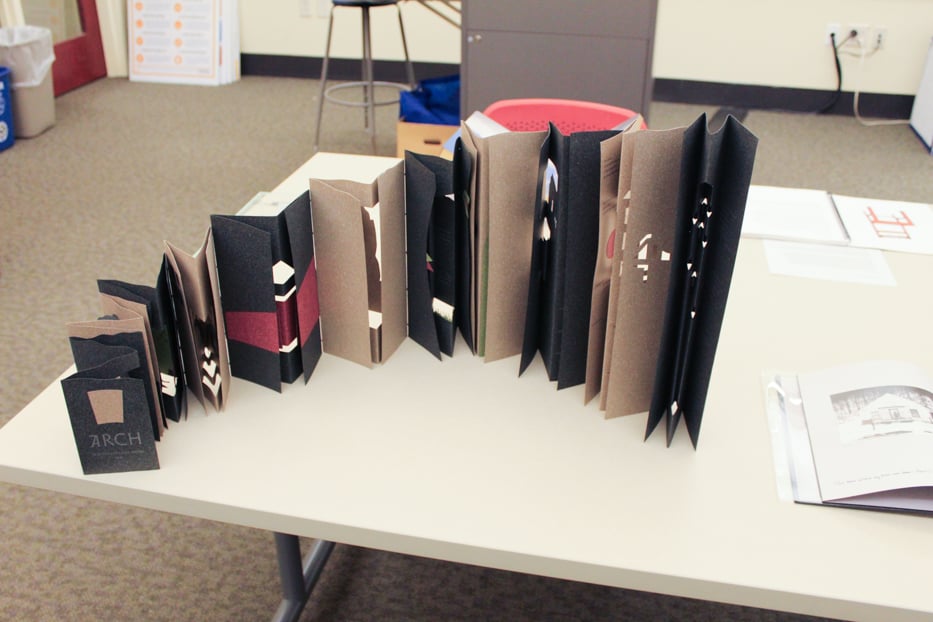 Top: Louise Neaderland's A Mideast Kaleidescope. Bottom: Arch, created by ten students in Kitty Maryatt's class at Scripps College.
Top: Louise Neaderland's A Mideast Kaleidescope. Bottom: Arch, created by ten students in Kitty Maryatt's class at Scripps College.
One book, a rare edition of Ursula K. Le Guin’s short story Direction of the Road, woodcut by Aaron Johnson, captures the effect of a reader’s encounter with materiality particularly well. The story, told from the perspective of an aging oak tree located off the side of a highway in Oregon, recounts modernity’s entry into the landscape—first, there are walkers, then horse-drawn carriages, then cars, speeding along. The rift between nature and industry grows wider and wider, and the tree becomes increasingly exhausted.
Leafing through the crisp, linen paper, it crinkles loudly, like leaves rustling in the wind or a creaking trunk. The serifed type is set in a compact block in the middle of a sprawling page—solitary, like the poor old oak tree. Also contained in the sturdy wooden box that holds the book is a cylindrical mirror. When the mirror is placed in a particular spot on the box, on top of a crescent-shaped jumble of lines, the oak is perfectly reflected.
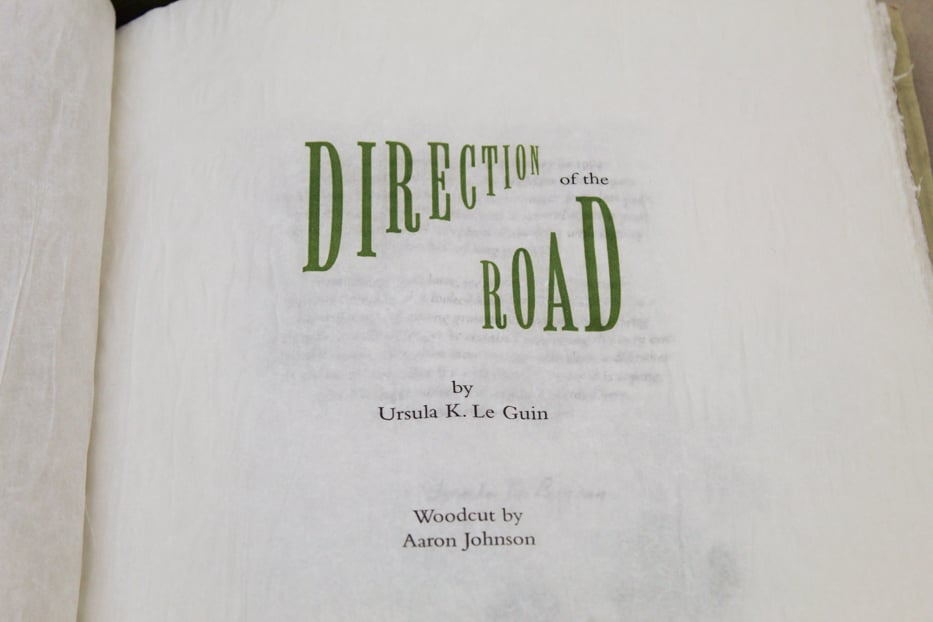
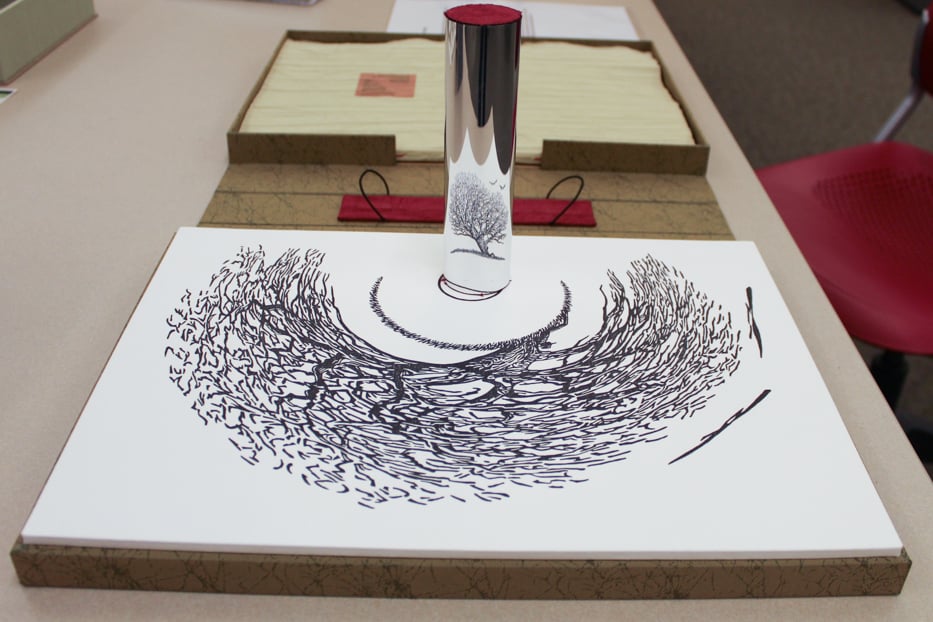 Aaron Johnson's woodcut edition of Ursula K. Le Guin's Direction of the Road.
Aaron Johnson's woodcut edition of Ursula K. Le Guin's Direction of the Road.
Re said that she wishes more people knew about the Artists’ Books Collection—and that they could experience the joys of flipping through pages, feeling their textures, and discovering new ways of reading that they never imagined.
“I am trying really hard to get the word out,” she said.
Classes at SCSU visit the collection periodically, as well as groups from local high schools, cultural organizations, and libraries. But Re wants more members of the public to come to Buley Library. All interested visitors need to do is browse the collection and decide which books interest them—or, simply contact Re and she will curate a selection.
“People are starting to realize libraries can be a source of inspiration for artists,” Re said. “I want this to fuel that kind of perception.